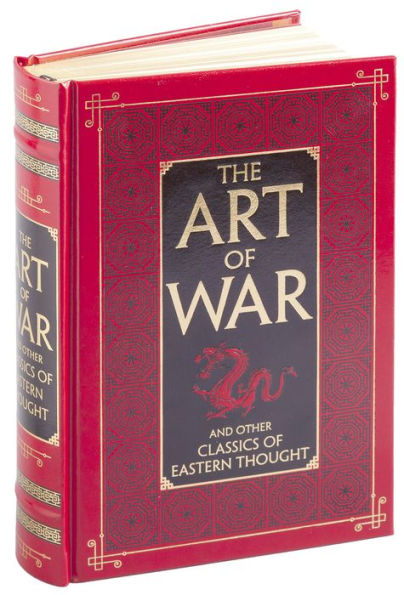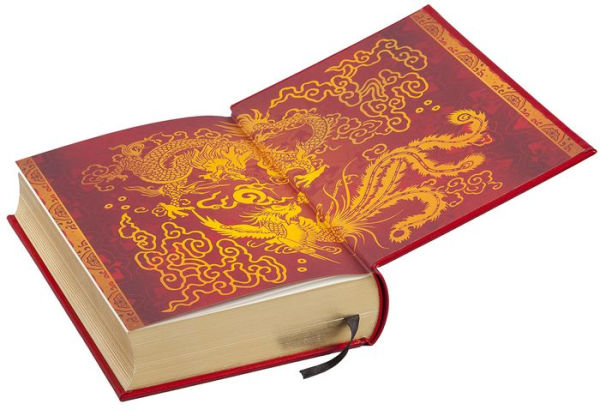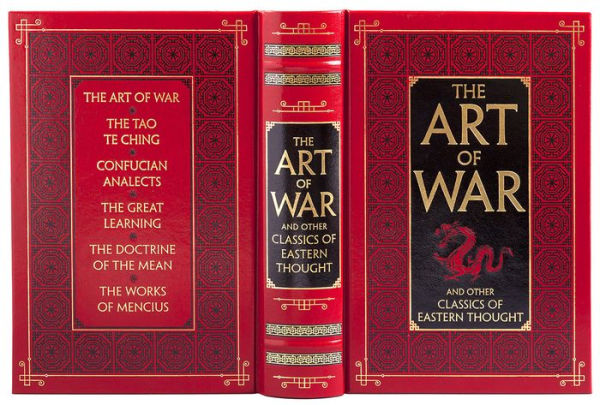We all think of summer as a good time to dig into a frothy beach read, but it’s also the perfect occasion to pick up a title or two from your (sometimes daunting) “To-Read” list—and you know the one I mean. Even the most dedicated reader has a list of books they’ve been meaning to […]
The Art of War and Other Classics of Eastern Thought (Barnes & Noble Collectible Editions)
The Art of War by the Chinese general Sun Tzu is one of the most influential books of military strategy ever written. For more than 2,000 years, its aphoristic insights and wisdom have been applied in a wide variety of disciplines, ranging from the business and legal professions to the martial arts and sports. The Art of War and Other Classics of Eastern Thought collects Sun Tzu's classic text and six other landmark books of Eastern philosophy and learning, including the Tao Te Ching of Lao Tzu, The Works of Mencius, and the Confucian Analects, Doctrine of the Mean, and Great Learning of Confucius. The Art of War and Other Classics of Eastern Thought is one of Barnes & Noble's Collectible Editions classics. Each volume features authoritative texts by the world's greatest authors in an exquisitely designed, bonded-leather binding, with distinctive gilt edging and a ribbon bookmark. Decorative, durable, and collectible, these books offer hours of pleasure to readers young and old and are an indispensable cornerstone for every home library.
1113792641
The Art of War and Other Classics of Eastern Thought (Barnes & Noble Collectible Editions)
The Art of War by the Chinese general Sun Tzu is one of the most influential books of military strategy ever written. For more than 2,000 years, its aphoristic insights and wisdom have been applied in a wide variety of disciplines, ranging from the business and legal professions to the martial arts and sports. The Art of War and Other Classics of Eastern Thought collects Sun Tzu's classic text and six other landmark books of Eastern philosophy and learning, including the Tao Te Ching of Lao Tzu, The Works of Mencius, and the Confucian Analects, Doctrine of the Mean, and Great Learning of Confucius. The Art of War and Other Classics of Eastern Thought is one of Barnes & Noble's Collectible Editions classics. Each volume features authoritative texts by the world's greatest authors in an exquisitely designed, bonded-leather binding, with distinctive gilt edging and a ribbon bookmark. Decorative, durable, and collectible, these books offer hours of pleasure to readers young and old and are an indispensable cornerstone for every home library.
25.0
In Stock
5
1

The Art of War and Other Classics of Eastern Thought (Barnes & Noble Collectible Editions)
760
The Art of War and Other Classics of Eastern Thought (Barnes & Noble Collectible Editions)
760Hardcover(Bonded Leather)
$25.00
25.0
In Stock


Product Details
| ISBN-13: | 9781435146211 |
|---|---|
| Publisher: | Barnes & Noble |
| Publication date: | 08/12/2013 |
| Series: | Barnes & Noble Collectible Editions Series |
| Edition description: | Bonded Leather |
| Pages: | 760 |
| Sales rank: | 10,094 |
| Product dimensions: | 6.00(w) x 9.40(h) x 1.80(d) |
From the B&N Reads Blog





